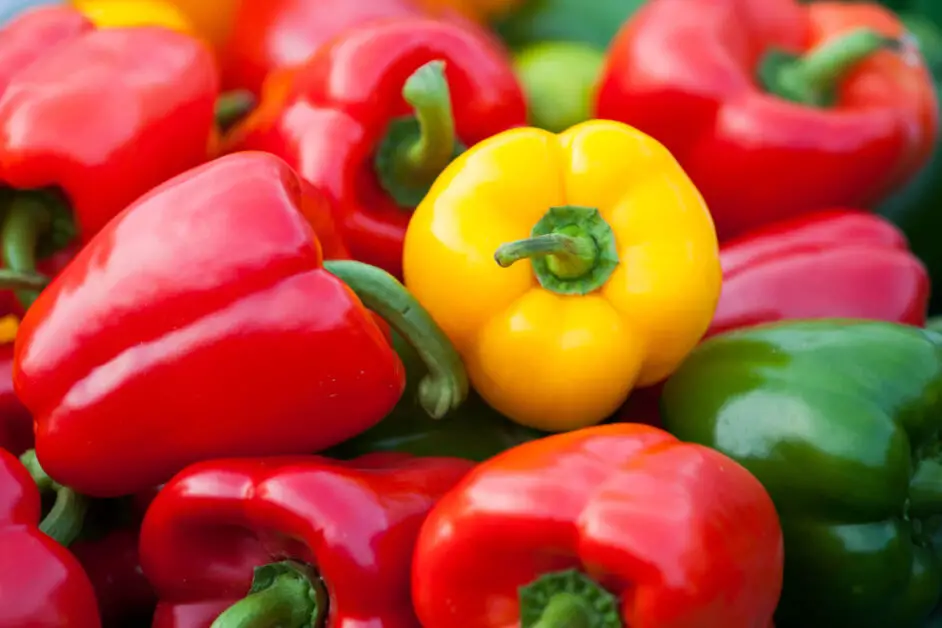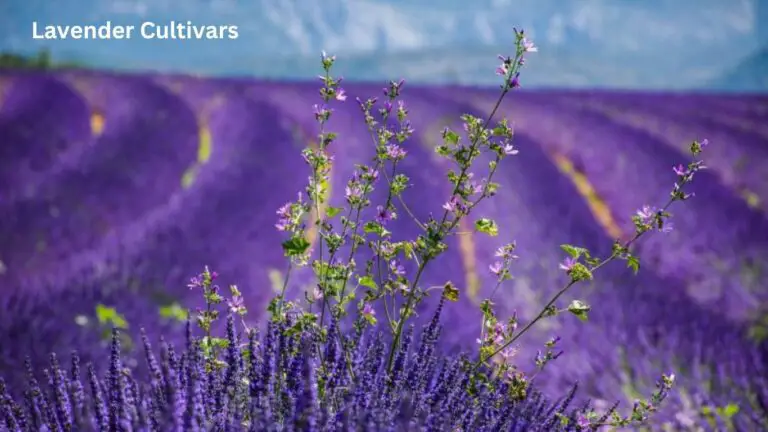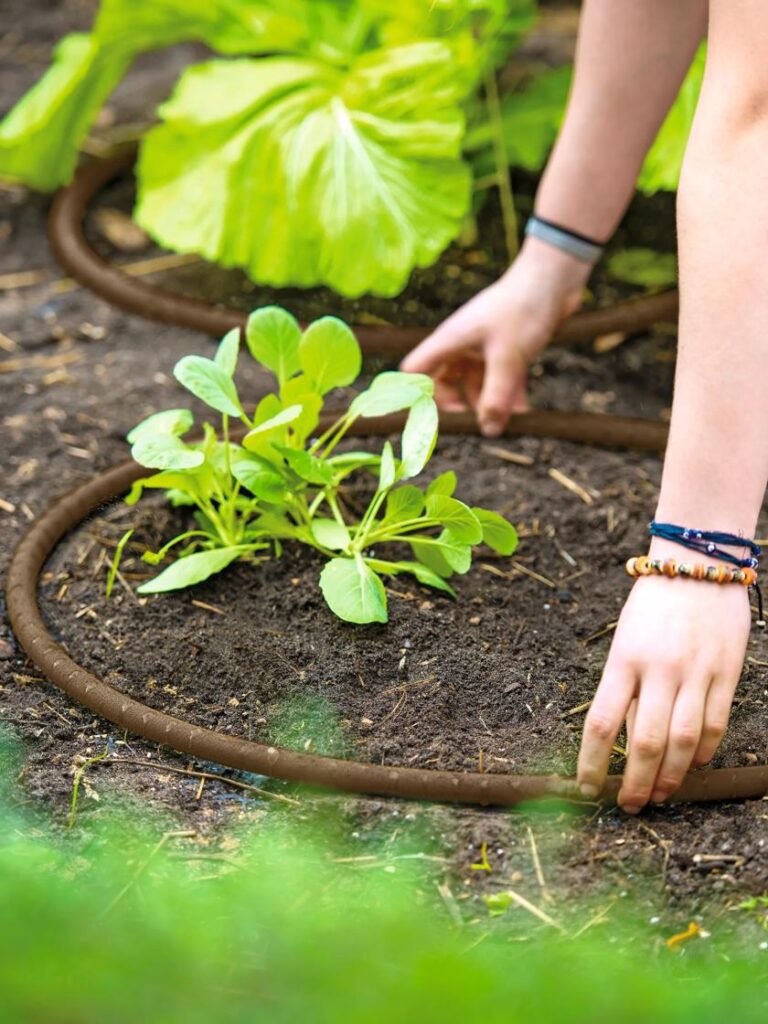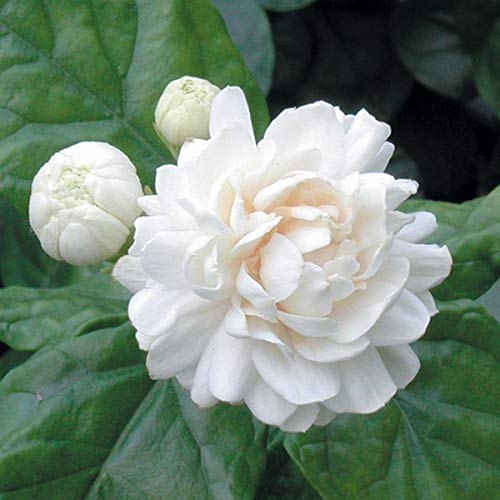How to Grow Bell Pepper Plants: A Guide to Growing These Sweet and Crunchy Peppers
Table of Contents
Understanding the Bell Pepper Plant: An Overview of the Basics
The bell pepper plant, scientifically known as Capsicum annuum, is a popular choice among gardeners for its vibrant colors and versatility in culinary applications. Originating from Central and South America, this warm-season vegetable belongs to the Solanaceae family, which also includes tomatoes, potatoes, and eggplants. With its bushy growth habit and dense foliage, the bell pepper plant can reach a height of 1 to 3 feet and spread up to 2 feet wide.
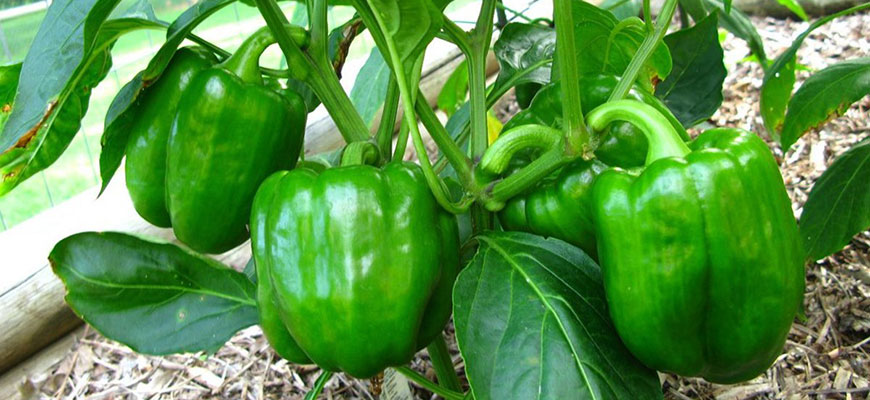
One of the distinctive features of the bell pepper plant is its fruit, which comes in various shapes, sizes, and colors. From the classic green bell peppers to the sweeter red, yellow, and orange varieties, these vegetables add both visual appeal and a burst of flavor to any dish. Moreover, bell peppers are an excellent source of essential nutrients such as vitamins A and C, fiber, and antioxidants. With their mild and subtly sweet taste, they can be enjoyed raw in salads, stuffed, grilled, sautéed, or used as a versatile ingredient in countless recipes. Understanding the basics of the bell pepper plant is essential for successful cultivation, from selecting the ideal location to providing proper care and maintenance
Selecting the Ideal Location for Your Bell Pepper Plants
When it comes to selecting the ideal location for your bell pepper plants, there are a few key factors to consider. First and foremost, bell peppers thrive in areas with full sun exposure. Aim for a location that receives at least 6-8 hours of direct sunlight each day. This will ensure your plants have ample energy to grow and produce vibrant, flavorful peppers.
In addition to sunlight, it’s important to find a spot that has well-drained soil. Bell peppers prefer soil that is rich in organic matter and has a pH level between 5.8 and 6.5. Conduct a soil test to determine the pH level and make any necessary adjustments by adding organic compost or other soil amendments. Proper drainage is crucial to prevent waterlogged soil, which can lead to root rot and other problems for your bell pepper plants.
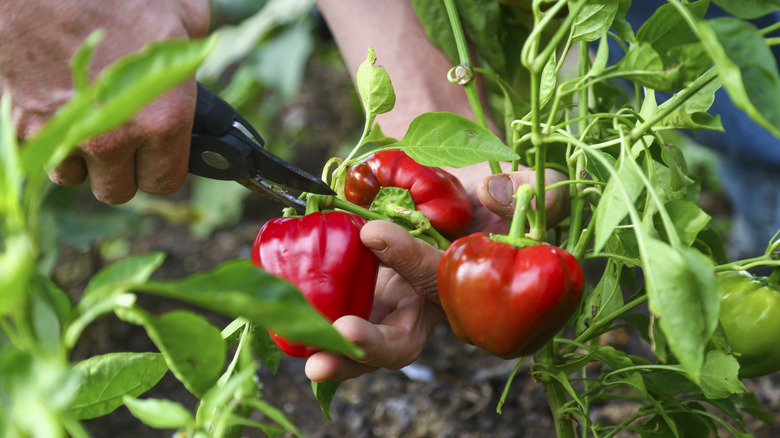
Furthermore, consider the microclimate of your garden. Bell peppers are sensitive to cold temperatures and frost. Choose a location that is sheltered from strong winds and frosty conditions, as this can cause damage to the plants and hinder their growth. If you live in a region with short growing seasons, you may want to consider using protective coverings or planting your bell peppers in containers that can be brought indoors during colder periods.
Preparing the Soil: Essential Steps for Optimal Growth
Preparing the soil is an essential step for the optimal growth of bell pepper plants. Properly preparing the soil ensures that it is rich in essential nutrients and has the right texture and drainage. This helps provide the best conditions for the plants to establish strong roots and grow vigorously.
To begin, it is crucial to test the soil’s pH level. Bell pepper plants thrive in slightly acidic to neutral soil, with a pH range of 6.0 to 7.0. Conducting a soil test will help determine the pH and guide you in making any necessary adjustments. If your soil is too acidic, adding lime can help raise the pH level, while sulfur can be added for soils that are too alkaline.

Once the pH level is balanced, it’s time to amend the soil with organic matter. Adding compost or well-rotted manure helps improve soil structure, fertility, and moisture-retention capability. These organic materials enhance nutrient availability and create a nutrient-rich environment for the bell pepper plants. Incorporating organic matter into the soil should be done before planting, ensuring that it is thoroughly mixed to distribute the nutrients evenly. This step is crucial, as it helps promote healthy growth and higher yields of bell peppers.
Choosing the Right Bell Pepper Varieties for Your Garden
When choosing the right bell pepper varieties for your garden, there are a few important factors to consider. First and foremost, you should think about the desired size and color of the peppers you want to grow. Bell peppers come in a wide range of sizes, from small snack-sized varieties to large peppers perfect for stuffing. Similarly, the color options are abundant, with green, red, yellow, and even purple varieties available.
Another key consideration is the level of heat you prefer in your peppers. While bell peppers are known for their mild flavor, some varieties can have a slightly spicy kick. If you enjoy a little heat, you may want to explore bell pepper varieties that have a higher capsaicin content.
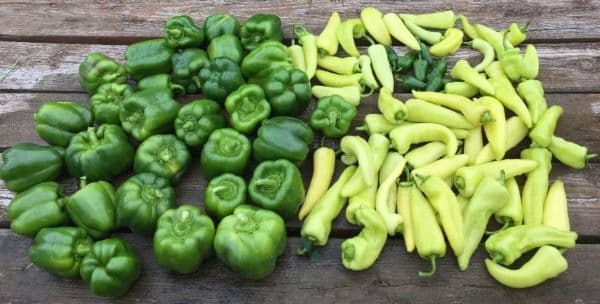
Aside from size, color, and heat level, you should also take into account the specific growing conditions in your garden. Factors such as climate, soil type, and available sunlight can impact the success of certain bell pepper varieties. For example, if you live in a region with a shorter growing season, you may want to select varieties that have a shorter time to maturity.
By carefully considering these factors and doing a bit of research, you can find the perfect bell pepper varieties to suit your garden and culinary preferences. Whether you’re looking for a sweet snacking pepper or a spicy addition to your favorite recipes, the right selection will ensure a bountiful and flavorful harvest.
Starting Bell Pepper Seeds: Tips for Successful Germination
To successfully germinate bell pepper seeds, there are a few key tips that can ensure optimal results. Firstly, it is important to select high-quality seeds from a reputable supplier. Look for seeds that are specifically labeled as bell pepper seeds and have a high germination rate. Additionally, choose a variety that suits your preferences and growing conditions.
Once you have your seeds, it is recommended to start them indoors about 8-10 weeks before the last frost date in your area. Start by filling a seed tray or individual pots with a seed starting mix, which provides a rich and well-draining medium for the seeds to grow in. Moisten the soil lightly before planting the seeds.
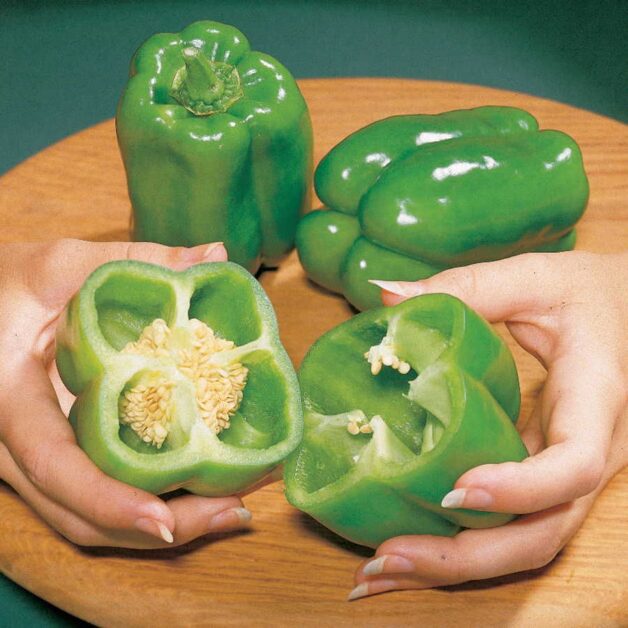
Next, sow the seeds about ¼ inch deep into the soil, spacing them about 2 inches apart. Gently press the soil down to ensure good seed-to-soil contact. Cover the tray with a plastic dome or wrap it with plastic wrap to create a warm and humid environment, which aids in germination. Place the tray or pots in a warm location, preferably around 70-85°F (21-29°C), such as near a sunny window or under grow lights.
It is crucial to keep the soil consistently moist during the germination process but avoid overwatering, as excessive moisture can lead to fungal diseases. Check the moisture level regularly and mist the soil with water or use a spray bottle to avoid disturbing the seeds. Germination usually takes around 7-14 days, and once the seedlings have emerged, remove the plastic cover to allow for air circulation.
Remember to keep the seedlings warm and well-lit to promote strong and healthy growth. Rotate the seedlings periodically to ensure even exposure to light. As they continue to grow, thin them out if needed, leaving only the strongest seedling in each pot or spacing them about 12-18 inches apart if using a tray.
By following these tips and providing the right conditions, you can increase your chances of successfully germinating bell pepper seeds and kick-starting the growth of your healthy pepper plants.
Transplanting Bell Pepper Seedlings: Ensuring a Smooth Transition
When it comes to transplanting bell pepper seedlings, ensuring a smooth transition is essential for their successful growth and development. This process involves carefully moving the seedlings from their original containers to their permanent planting location.
Before transplanting, it is crucial to harden off the seedlings, which means gradually acclimating them to outdoor conditions. This can be done by exposing them to sunlight, wind, and temperature variations for a few hours each day over a week. Hardening off helps prevent transplant shock and allows the seedlings to adjust to their new environment.
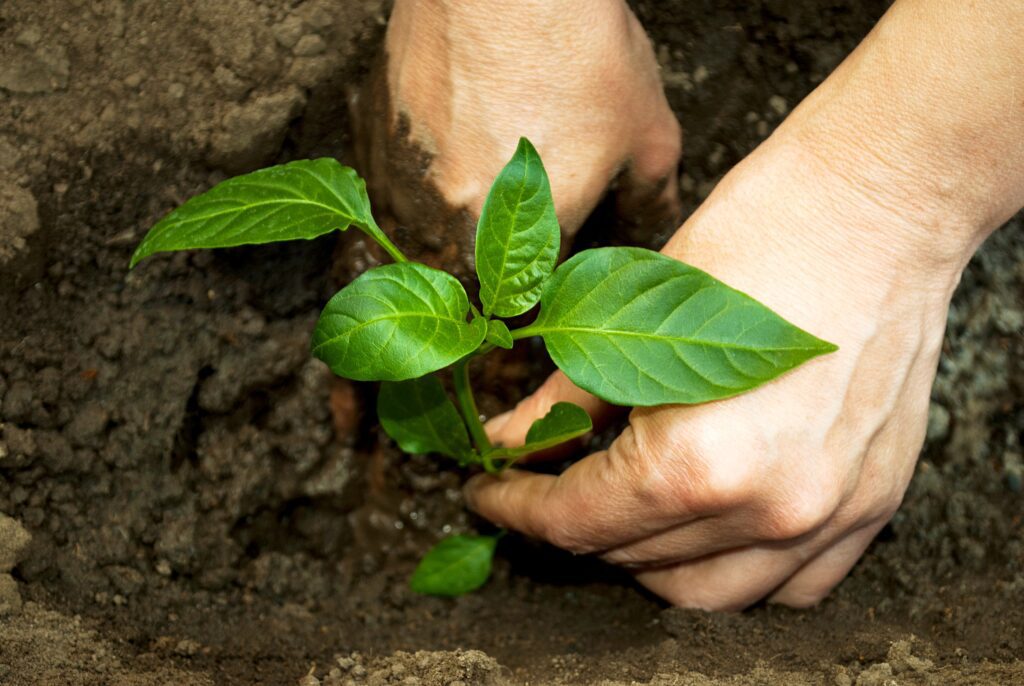
During the transplanting process, it is important to handle the seedlings with care, being mindful of their delicate roots. One common technique is to dig a hole slightly larger than the root ball of the seedling and gently place the seedling in, ensuring that the top of the root ball is level with the soil surface. The seedlings should then be backfilled with soil and gently tamped down to eliminate any air pockets.
Watering the newly transplanted seedlings immediately after planting is crucial to promote root establishment. Providing thorough watering will help settle the soil and ensure that the roots have proper access to moisture. Ongoing care, such as regular watering and monitoring for pests and diseases, is essential in the days and weeks following transplantation.
By following these guidelines, you can ensure a smooth transition for your bell pepper seedlings, setting them up for healthy growth and a bountiful harvest.
Providing Proper Nutrition: Fertilizing Techniques for Healthy Plants
To ensure healthy growth and bountiful harvests, providing proper nutrition to your bell pepper plants is crucial. Fertilizing techniques play a pivotal role in supplying the necessary nutrients that help plants thrive. By understanding the nutritional requirements of bell peppers and adopting effective fertilizing practices, you can create an optimal growing environment for your plants.
One key aspect of fertilizing bell pepper plants is choosing the right type of fertilizer. Bell peppers require a balanced blend of nutrients, including nitrogen, phosphorus, and potassium, commonly known as NPK. Nitrogen promotes leaf and stem growth, phosphorus enhances flower and fruit development, and potassium strengthens overall plant health. Look for a fertilizer with an NPK ratio of around 5-10-10 or 10-10-10, indicating equal proportions of each nutrient. Additionally, consider using organic fertilizers, such as compost or well-rotted manure, to provide a slow and steady release of nutrients over time.
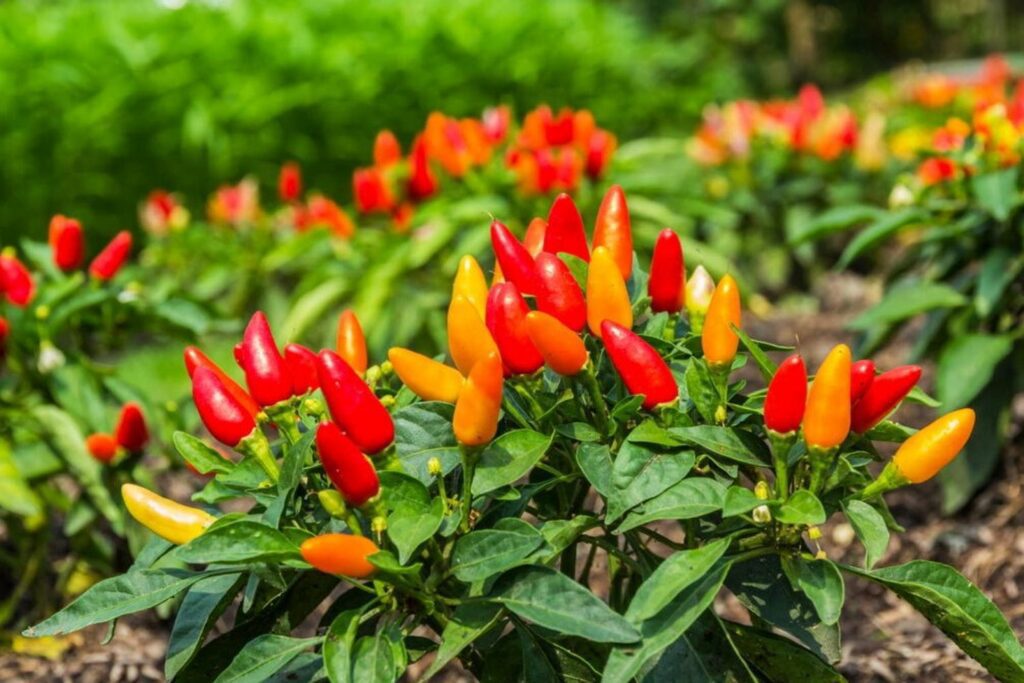
Another essential technique in fertilizing bell peppers is timing and frequency. Start fertilizing your plants when they begin to develop their first true leaves, usually about three to four weeks after transplanting. Apply the fertilizer evenly around the base of the plants, being careful not to let it touch the leaves or stems. For a continuous supply of nutrients, repeat the fertilization process every four to six weeks throughout the growing season. However, it’s crucial not to over-fertilize, as excessive nutrients can lead to excessive foliage growth at the expense of fruit production. By following these fertilizing techniques, you can provide your bell pepper plants with the nourishment they need for healthy growth and a plentiful harvest.
Watering Bell Pepper Plants: Best Practices for Optimum Growth
Watering bell pepper plants is a crucial aspect of their care, directly impacting their growth and overall health. To ensure optimum growth, it is important to follow best practices for watering your bell pepper plants. The frequency and amount of water needed may vary depending on factors such as the climate, soil type, and stage of plant development.
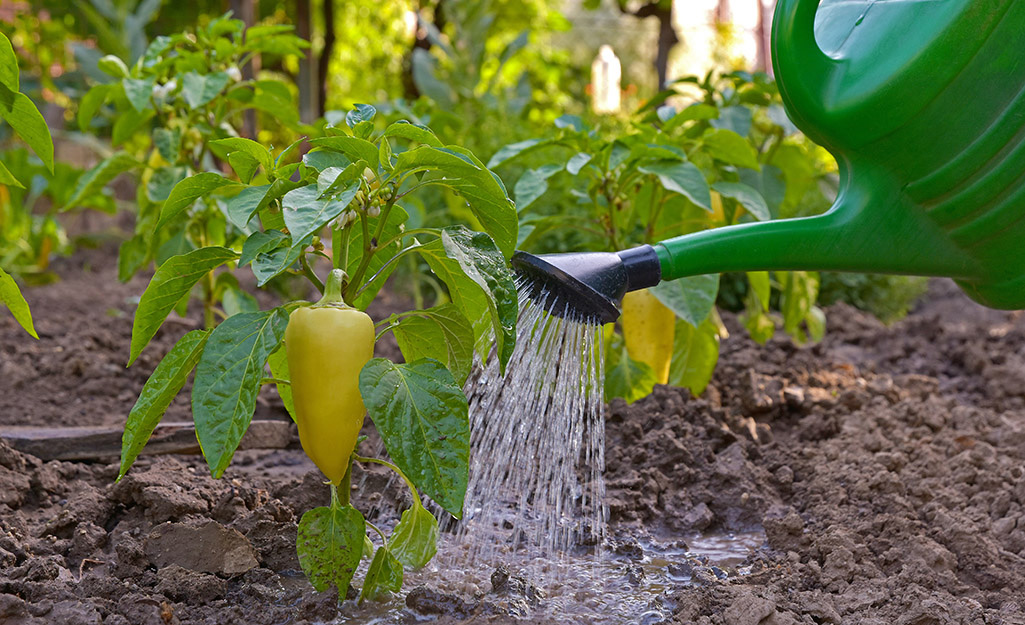
It is generally recommended to water bell pepper plants deeply and consistently, allowing the soil to dry out slightly between watering sessions. This helps promote healthy root development and prevents issues like root rot. However, overwatering should be avoided as it can lead to waterlogged soil and suffocate the roots. To determine if your plants need watering, you can use the finger test: insert your finger into the soil up to the second joint and check for moisture. If it feels dry, it’s likely time to water. It’s worth noting that bell pepper plants require more water during periods of intense heat or drought, so be sure to adjust your watering schedule accordingly.
Protecting Bell Pepper Plants from Pests and Diseases
Bell pepper plants are highly susceptible to various pests and diseases, which can significantly impact their growth and yield. Therefore, gardeners must take proactive steps to protect their bell pepper plants and ensure long-term health. One common pest that poses a threat to bell pepper plants is aphids. These small insects feed on the sap of the plants, causing yellowing of leaves, stunted growth, and distortion of the fruits. To control aphids, gardeners can introduce beneficial insects such as ladybugs or lacewings, which are natural predators of aphids. Additionally, using insecticidal soaps or neem oil can help to prevent infestation and reduce aphid populations on bell pepper plants.
Another pest that can damage bell pepper plants is the pepper weevil. These small beetles lay their eggs on young pepper fruits and their larvae feed on the developing seeds, causing extensive damage. To prevent pepper weevil infestations, gardeners should regularly inspect their plants for the presence of eggs or larvae and remove any affected fruits immediately. In cases of severe infestations, chemical insecticides may be necessary, but it is crucial to choose products labeled specifically for use on bell peppers and follow the instructions carefully to minimize the impact on the environment. Providing physical barriers such as row covers can also be an effective method to prevent pepper weevil infestations.
When it comes to diseases, one of the most common ones that affect bell pepper plants is bacterial leaf spot. This disease is caused by bacteria and manifests as dark, water-soaked lesions on the leaves, which can eventually lead to defoliation and diminished yield. To prevent the onset and spread of bacterial leaf spots, it is crucial to practice good sanitation in the garden. This includes removing and destroying any affected plant debris, avoiding overhead watering, and providing adequate air circulation between plants. Moreover, applying copper-based fungicides in the early stages of the disease can help to control the spread and minimize its impact on bell pepper plants.
Overall, protecting bell pepper plants from pests and diseases requires a combination of preventive measures, regular monitoring, and prompt action when necessary. By implementing these strategies, gardeners can ensure the health and productivity of their bell pepper plants and enjoy a bountiful harvest.
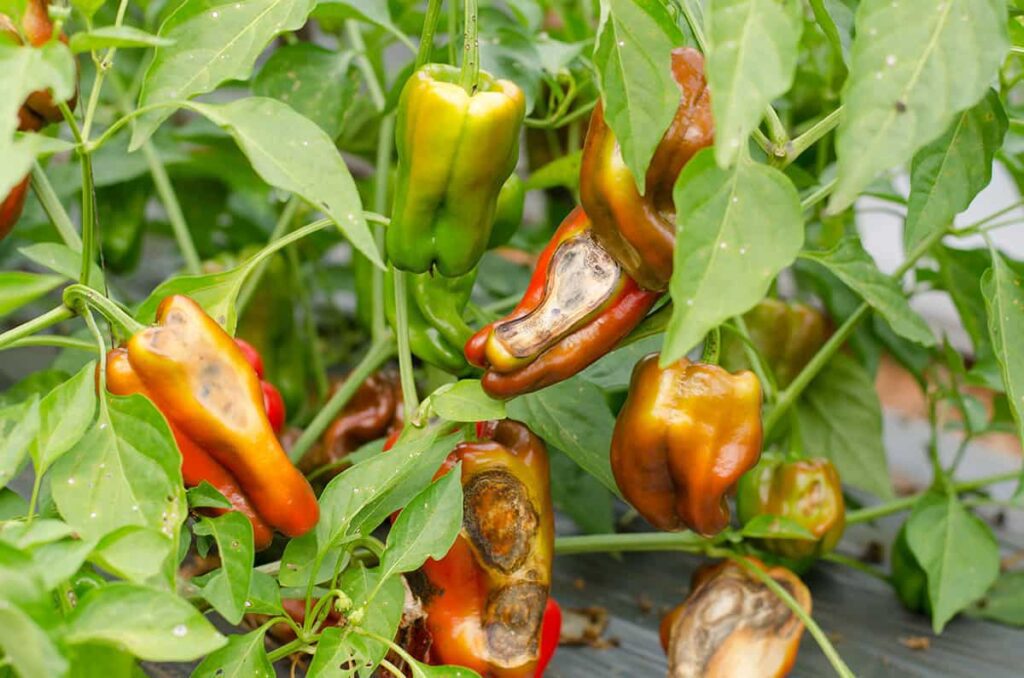
Supporting Your Bell Pepper Plants: Staking and Pruning Guidelines
Staking and pruning are important practices in supporting the growth and productivity of bell pepper plants. Staking refers to using support structures that keep the plants upright and prevent them from falling over due to their heavy fruits. Pruning, on the other hand, involves the removal of certain parts of the plant to promote better air circulation, sunlight penetration, and overall plant health.
When it comes to staking bell pepper plants, there are several options to consider. One popular method is using stakes made of bamboo or metal. These stakes should be driven into the ground near the base of the plant and securely tied to the main stem. Another option is using cages made of wire or plastic, which provide a more structured support for the plants. Whichever method you choose, it’s important to ensure that the stakes or cages are tall enough to accommodate the plants’ growth and strong enough to hold the weight of the fruits.
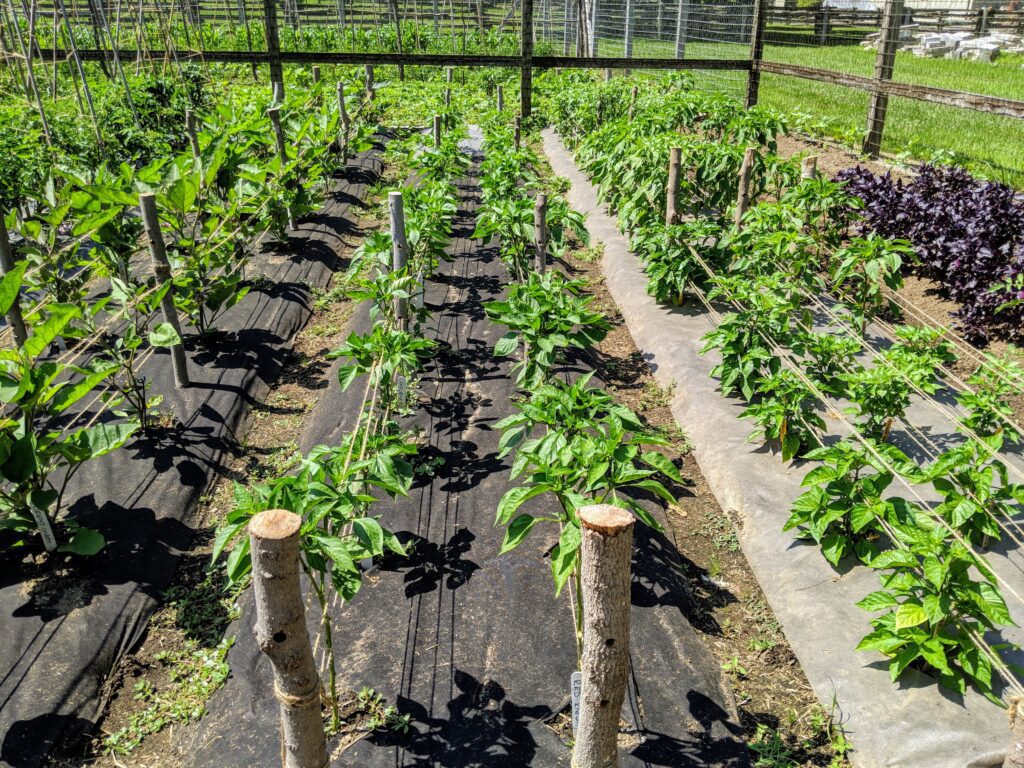
As for pruning bell pepper plants, it is generally recommended to remove the suckers or side shoots that grow between the main stem and the branches. These suckers tend to divert energy away from fruit production and can result in smaller, less productive peppers. Simply pinch off these suckers when they are small and easily manageable. Additionally, if any diseased or damaged leaves or branches are observed, it is best to remove them promptly to prevent the spread of infections.
By properly staking and pruning your bell pepper plants, you can provide the necessary support for their growth and optimize their productivity. Always remember to handle the plants gently while staking or pruning to avoid causing any damage. With the right techniques in place, you’ll be on your way to enjoying a bountiful harvest of delicious and vibrant bell peppers.
Harvesting Bell Peppers: Knowing When and How to Pick Them
Harvesting bell peppers at the right time is crucial to enjoy their full flavor and nutritional benefits. When it comes to determining the right time to pick your bell peppers, color is a key indicator. Mature bell peppers are usually shiny and have a vibrant, glossy color. For green bell peppers, this is typically when they reach their full size and have developed a deep, rich green color. However, if you prefer sweeter bell peppers, allowing them to ripen further is advisable. Green bell peppers will turn yellow or red as they mature, and these colors often indicate a sweeter taste.
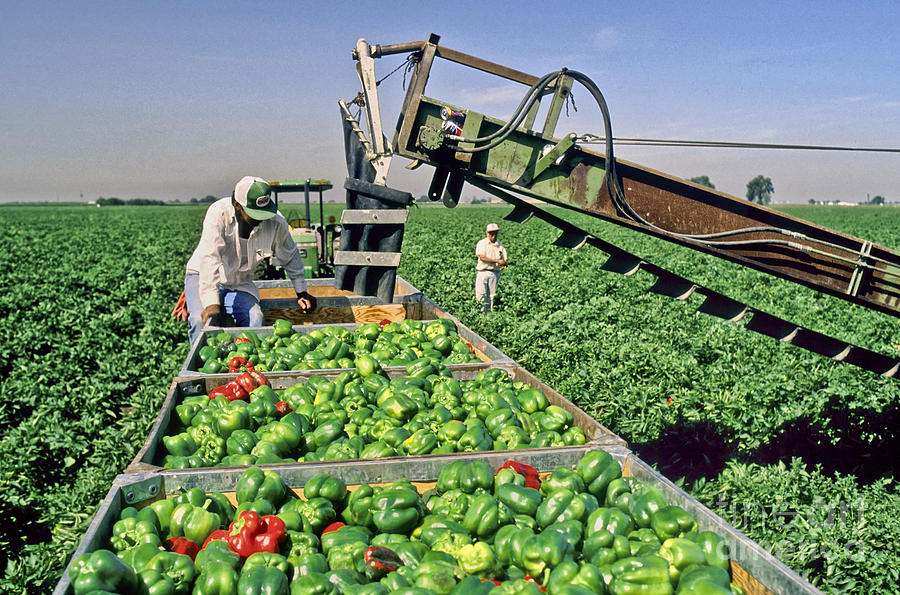
To harvest the bell peppers, it is important to use a pair of sharp garden scissors or shears to snip the stems above the fruit. This prevents any damage to the plant and ensures a clean cut. Avoid pulling or twisting the peppers off the plant, as this can damage the stems and may even detach entire branches. It is recommended to wear gloves while harvesting bell peppers, as they have small, irritant hairs on their stems that can cause skin irritation for some individuals. By using a gentle twisting motion as you cut the stems, you can easily detach the bell peppers from the plant without causing any harm.
Storing and Preserving Bell Peppers: Tips for Longevity and Flavor
Bell peppers are a versatile and vibrant addition to any dish, but their optimal flavor and longevity depend on proper storage and preservation techniques. To ensure your bell peppers stay fresh and flavorful for as long as possible, it’s important to follow a few guidelines. Firstly, it’s crucial to store bell peppers in a cool and dry environment, such as the refrigerator’s crisper drawer. The ideal temperature range for bell peppers is between 40°F (4°C) and 45°F (7°C), which helps to slow down the ripening process and extend their shelf life. Additionally, storing bell peppers away from ethylene-emitting fruits, such as apples and bananas, can prevent premature ripening and maintain their crispness.
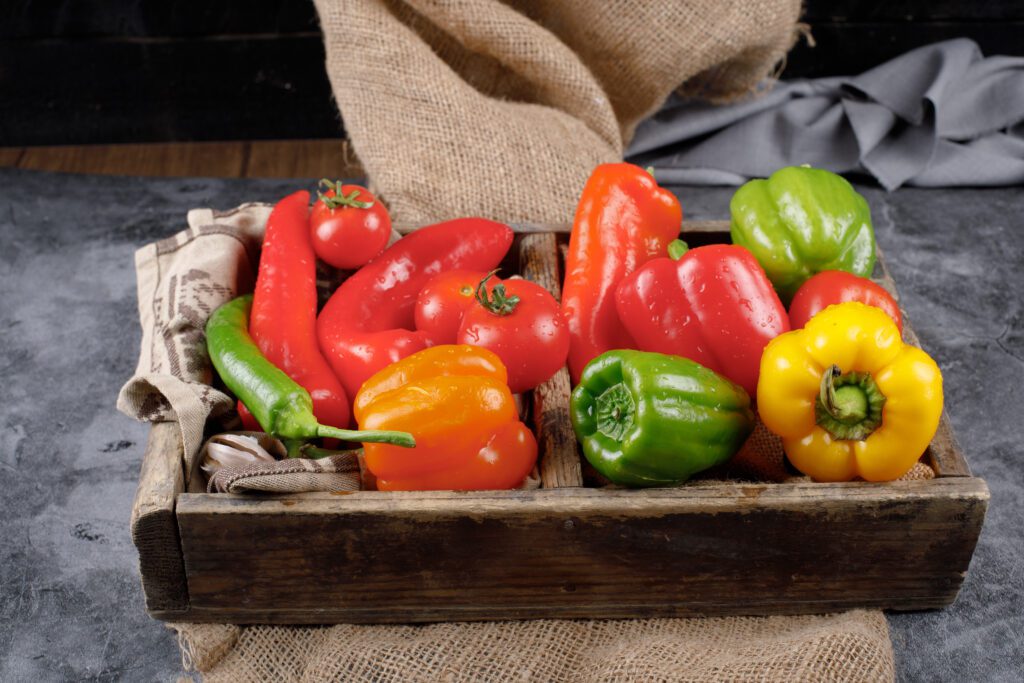
When it comes to preserving bell peppers, there are several methods you can utilize. Freezing is a popular option that allows you to enjoy the flavors of bell peppers all year round. To freeze bell peppers, start by washing and drying them thoroughly. Then, remove the seeds and core, and cut the peppers into slices, quarters, or dice according to your preference. Blanching the peppers by quickly dipping them in boiling water for a couple of minutes can help preserve their color and texture. After blanching, transfer the peppers to an airtight container or freezer bag, ensuring to remove any excess air, and store them in the freezer for up to a year. Remember to label the containers or bags with the date for easy reference.
Troubleshooting Common Issues: Dealing with Challenges in Bell Pepper Cultivation
Bell pepper cultivation can sometimes present several challenges that may hinder the optimal growth and yield of these plants. One common issue faced by gardeners is blossom end rot. This condition is characterized by brown or black rotting spots at the blossom end of the pepper, which can eventually lead to the entire fruit becoming inedible. Blossom end rot is typically caused by a calcium deficiency in the plant, which can be a result of irregular watering or nutrient imbalances in the soil. To prevent this problem, it is crucial to maintain consistent moisture levels in the soil and ensure that the plants receive adequate calcium. Adding calcium-rich amendments, such as crushed eggshells or gypsum, can be beneficial in mitigating blossom end rot and promoting healthy fruit development.
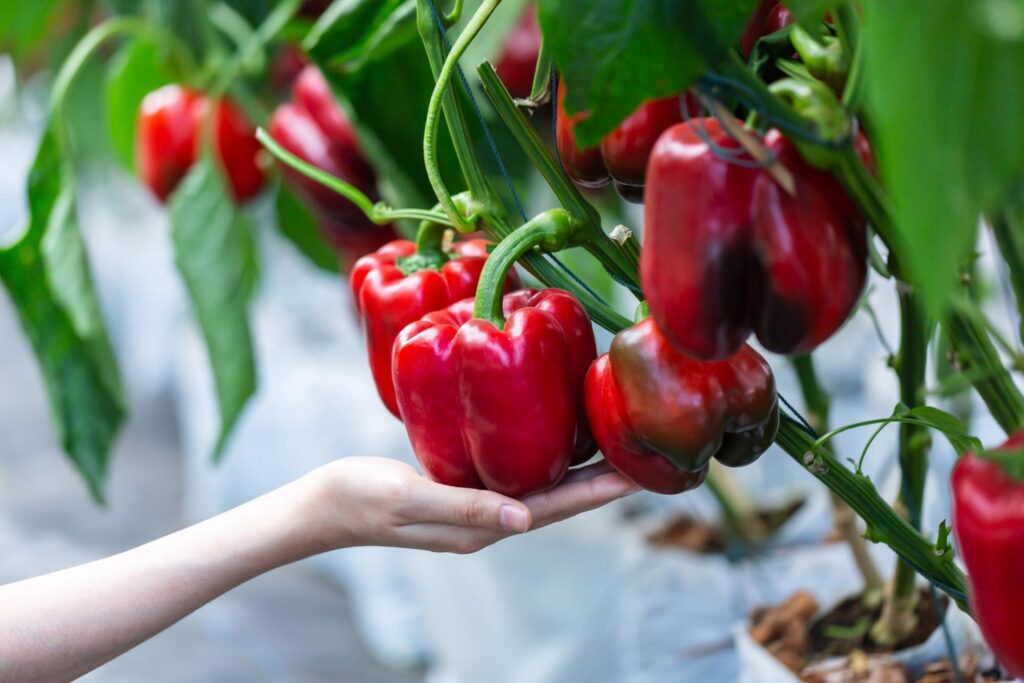
Another challenge that bell pepper cultivators often encounter is aphid infestation. Aphids are small, soft-bodied insects that feed on the sap of plants, causing extensive damage to the leaves and shoots. These pests can be a significant threat to bell peppers as they can transmit diseases and hinder plant growth. To tackle aphid infestation, it is essential to implement an integrated pest management approach. This can include introducing beneficial insects like ladybugs or lacewings to the garden, as they prey on aphids, and can help to control their population naturally. Additionally, using insecticidal soaps or neem oil sprays can be effective in combating aphids without harming the environment or beneficial insects. Regular monitoring and early detection of aphid colonies are key elements in successfully managing this pest and ensuring the health of bell pepper plants.
Why are my bell pepper plants not growing?
There could be several reasons for slow or stunted growth in bell pepper plants. Some common causes include insufficient sunlight, poor soil quality, inadequate watering, or pests and diseases. It is important to assess these factors and make appropriate adjustments to promote healthy growth.
How often should bell pepper plants be watered?
Bell pepper plants typically require regular watering, especially during hot and dry periods. It is recommended to water them deeply once or twice a week, ensuring that the soil is moist but not waterlogged. However, the frequency may vary depending on factors such as climate, soil type, and plant size.
Why are my bell pepper leaves turning yellow?
Yellowing leaves in bell pepper plants can indicate various issues. It could be due to nutrient deficiencies, such as a lack of nitrogen or iron. Overwatering or poor drainage can also cause yellowing leaves. Additionally, pests or diseases, like aphids or fungal infections, may be the cause. Proper diagnosis and treatment are necessary to address the underlying problem.
How can I protect my bell pepper plants from pests?
To protect bell pepper plants from pests, it is important to implement preventive measures. This may include regular inspection for signs of infestation, practicing crop rotation, maintaining proper plant spacing, and using organic insecticides or natural pest control methods. Encouraging beneficial insects, such as ladybugs or lacewings, can also help control pests.
Can bell pepper plants tolerate frost?
Bell pepper plants are sensitive to cold temperatures and cannot tolerate frost. It is crucial to plant them after the threat of frost has passed and ensure that they are grown in a warm and protected location. If frost is expected, providing coverings such as blankets or frost cloths can help protect the plants.
When is the best time to harvest bell peppers?
Bell peppers can be harvested when they have reached their desired size and color. Generally, green bell peppers are harvested when fully mature, while red, yellow, or orange varieties are allowed to ripen further on the plant. It is recommended to harvest bell peppers by gently cutting them from the plant using a sharp knife or pruning shears.
How long can bell peppers be stored?
Bell peppers can be stored for an extended period if kept under appropriate conditions. When stored in the refrigerator, they can last for about one to two weeks. However, for longer storage, bell peppers can be frozen or preserved by canning. It is important to properly wash and dry them before storing them to maintain their quality and flavor.

Kanike Sreekanth, a prolific writer at SouthElMonteHydroponics, brings a unique blend of creativity and scientific rigor to the table. With a degree in Horticulture from a prestigious institution, Kanike’s expertise spans hydroponic farming, plant biology, and agricultural sustainability. Their passion for exploring innovative cultivation methods and promoting environmental stewardship drives them to uncover new insights in the realm of hydroponics. Kanike’s writing serves as a conduit for sharing their knowledge and inspiring others to embrace alternative farming practices for a more sustainable future.

